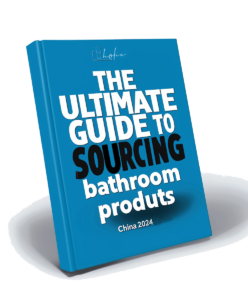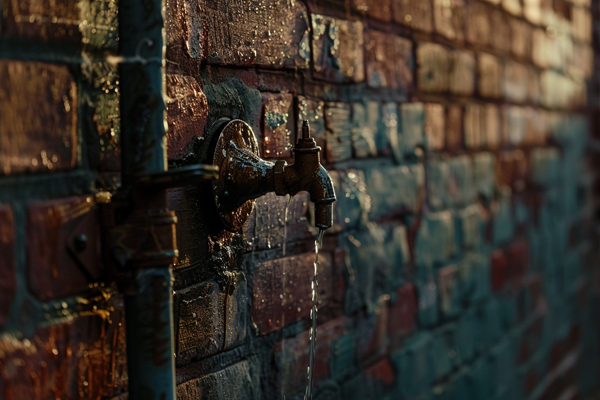
A leaking or damaged hose bib can waste water and cause costly repairs. Understanding its function and maintenance1 helps avoid these issues.
A hose bib is an outdoor water fixture that controls water flow for gardening, cleaning, and other outdoor activities.
Keeping your hose bib in good condition ensures proper function and prevents leaks.
What is a hose bib, and what are its main requirements?
A hose bib is an outdoor faucet connected to a building's plumbing system, designed to provide easy water access for tasks like gardening, cleaning, and car washing. It features a threaded spout that allows secure hose attachment and reliable water control.
A hose bib2 must be durable, frost-resistant (if needed), and have proper shut-off functionality to prevent leaks and water waste, especially in extreme weather conditions. In colder climates, frost-proof models are essential to prevent pipe damage from freezing, while anti-siphon features protect the home’s water supply from contamination by blocking backflow.
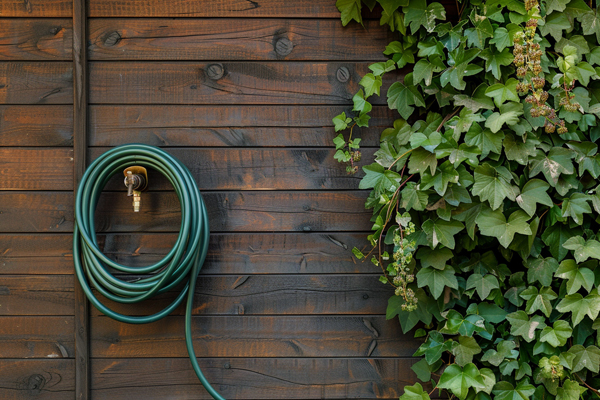
Common Types of Hose Bibs
| Type | Features | Best Use Case |
|---|---|---|
| Standard Hose Bib | Basic on/off functionality | General use |
| Frost-Free Bib | Prevents freezing in cold climates | Winter-prone areas |
| Anti-Siphon Bib | Prevents backflow contamination | Safety-focused homes |
Choosing the right hose bib depends on your climate, usage needs, and plumbing safety requirements to ensure reliable outdoor water access year-round.
Is there a difference between a spigot and a hose bib?
Many people use "spigot" and "hose bib" interchangeably, but understanding their differences can help you choose the right fixture for your outdoor water needs.
What’s the difference?
A spigot3 generally refers to any outdoor faucet, while a hose bib specifically describes a threaded outdoor faucet designed for attaching garden hoses. In simple terms, all hose bibs are spigots, but not all spigots are hose bibs. A spigot may provide water flow without a threaded outlet, while a hose bib is purpose-built to handle hose connections securely, preventing leaks and ensuring efficient water delivery.
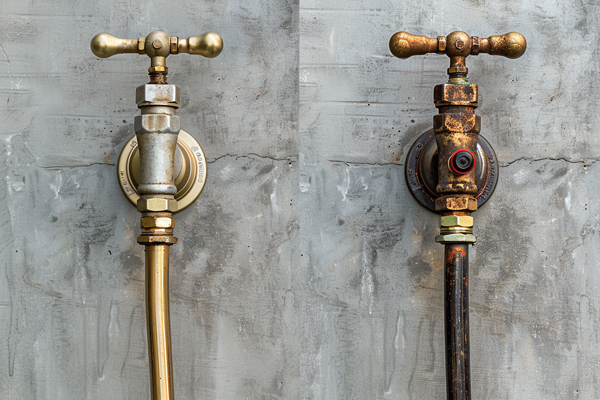
Key Differences
- Spigot – General term for water outlets, covering both indoor and outdoor faucets without requiring a threaded design.
- Hose Bib – Specifically made for garden hoses, featuring a threaded spout to connect hoses easily and securely.
- Sillcock – A specialized type of hose bib that extends inside the home’s wall to protect pipes from freezing, ideal for colder climates.
Understanding these differences helps ensure you select the correct outdoor faucet for durability, hose compatibility, and protection against weather-related damage.
How do you choose the right size hose bib?
Choosing the right size hose bib is essential to ensure proper water pressure and flow for your outdoor tasks. The ideal size depends on your home's plumbing system, water demand, and the type of hose or irrigation setup you plan to use.
What sizes are available?
A ¾-inch hose bib4 delivers higher water flow, making it ideal for larger gardens and heavy-duty water use, while a ½-inch option is standard for typical residential needs like light gardening and washing. Using the correct size ensures efficient watering without overloading your plumbing system, preventing pressure drops or inadequate water supply during use.

Hose Bib Size Guide
| Pipe Size | Water Flow (GPM) | Best for |
|---|---|---|
| ½ inch | 4–5 GPM | Small yards, basic residential use |
| ¾ inch | 6–12 GPM | Large gardens, high-volume watering |
How to select the right size
- Choose ½ inch if you need moderate water flow for everyday tasks like watering small lawns, filling buckets, or washing vehicles.
- Choose ¾ inch if you require strong water pressure for extensive gardens, sprinkler systems, or multiple hoses running at the same time.
Selecting the appropriate size improves efficiency, prevents water flow restrictions, and ensures your outdoor faucet meets the demands of your space.
What is the ideal height for installing a hose bib?
Installing a hose bib at the correct height ensures comfortable use, protects the fixture from accidental damage, and complies with local regulations when applicable.
What is the recommended height?
The ideal height for a hose bib5 is between 12 to 18 inches above the ground, providing easy access for connecting hoses while keeping the spigot elevated enough to avoid interference from soil, debris, or lawn equipment. This height also helps prevent bending or strain during use and keeps the hose connection clear of standing water, which reduces the risk of corrosion or contamination.

Factors Affecting Placement
- Low placement – Reduces visibility, which may be desirable for aesthetics, but makes bending necessary and can cause difficulty when attaching hoses.
- Higher placement – Easier to reach and more comfortable to use, though it might require a longer hose to reach certain areas.
- Local building codes – Some regions have specific guidelines for outdoor faucet installation heights to ensure accessibility, frost protection, and drainage compliance.
For best results, always check local code requirements and consider the surrounding landscape to position the hose bib where it remains practical, protected, and efficient for daily use.
Do you need a backflow preventer for your hose bib?
A backflow preventer is essential for protecting your home's water supply by stopping contaminated water from flowing backward into the plumbing system, which can occur when there is a sudden drop in water pressure.
Why is backflow prevention important?
Most modern hose bibs6 come with built-in backflow prevention, but in older systems, an add-on may be necessary to ensure your water stays safe. Without proper protection, fertilizers, chemicals, or bacteria from hoses connected to pools, gardens, or cleaning tools could enter your household water, posing serious health risks. Installing a backflow preventer is a simple but critical step to safeguard your drinking water.
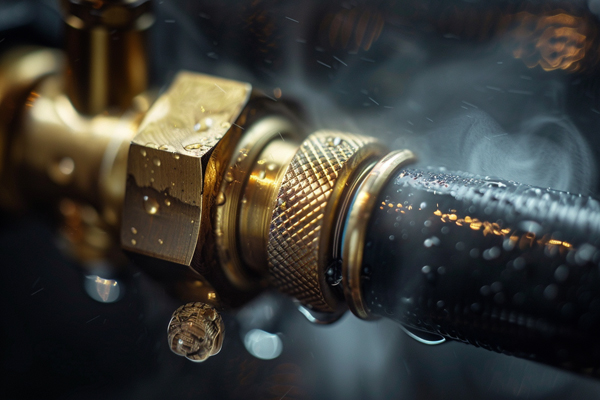
Benefits of a Backflow Preventer
- Prevents contamination of drinking water by blocking reverse flow from hoses exposed to dirt, pesticides, and chemicals.
- Required by code in many municipalities to meet health and safety standards for residential plumbing.
- Easy to install and inexpensive, typically attaching directly to the hose bib with no special tools needed.
To ensure full protection, check your local plumbing codes and upgrade older hose bibs with a backflow preventer if one is not already integrated.
Can you replace a hose bib yourself, or do you need a plumber?
Replacing a hose bib can be a straightforward DIY task for homeowners with basic plumbing knowledge, but more complex setups may require professional assistance to avoid leaks and long-term water damage.
When is DIY replacement possible?
A simple screw-on replacement is easy, but soldered or interior bibs7 may need a plumber due to the need for specialized tools and techniques. Threaded hose bibs can often be unscrewed and swapped without major plumbing modifications. However, soldered connections involve cutting, torching, and precise sealing to ensure watertight results, which can be challenging for DIYers.
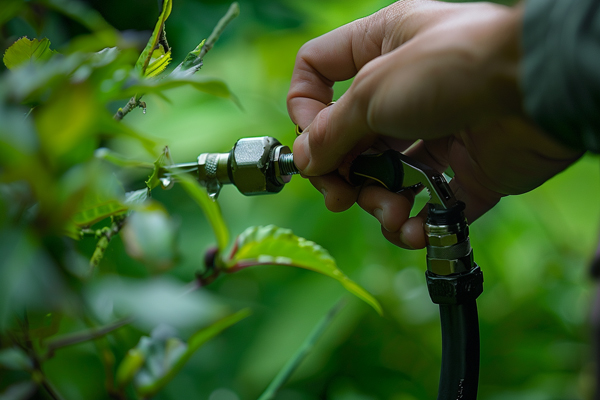
DIY vs. Professional Installation
| Task | DIY Possible? | Plumber Recommended? |
|---|---|---|
| Threaded Hose Bib Replacement | Yes | No |
| Soldered Hose Bib Replacement | No | Yes |
| Frost-Free Hose Bib Installation | Maybe | Yes |
How to decide if you need a plumber
If your hose bib connects to interior pipes, requires cutting into walls, or needs soldering, hiring a licensed plumber ensures the job is done safely and up to code. DIY is best suited for simple exterior replacements, while professional installation is advisable for frost-free models, older plumbing systems, or situations where water damage risks are high.
How much does a new hose bib cost?
The cost of a new hose bib8 depends on the type, material, and additional features designed to improve durability and safety.
What is the typical price range?
A standard hose bib costs between $10 to $50, while frost-free and anti-siphon models cost more due to their added protection against freezing and water contamination. Higher-end models made from brass or stainless steel offer increased longevity but come at a higher price point. In addition to the bib itself, consider potential installation costs if professional help is needed, especially for frost-free models or replacements involving plumbing adjustments.

Price Breakdown
| Type | Cost Range |
|---|---|
| Standard Hose Bib | $10 – $30 |
| Frost-Free Hose Bib | $20 – $50 |
| Anti-Siphon Hose Bib | $25 – $60 |
What affects the price of a hose bib?
- Material: Brass and stainless steel last longer but cost more than plastic or basic metals.
- Features: Frost-free and anti-siphon protections increase the price for added safety and durability.
- Installation complexity: Costs rise if plumbing modifications, soldering, or wall access are required.
When budgeting for a new hose bib, factor in both the product price and any additional labor or accessory costs to avoid unexpected expenses.
How much does it cost to replace a hose bib?
Replacing a hose bib involves both the cost of the fixture itself and any labor fees if you hire a professional. The total price can vary based on the type of hose bib, the complexity of the installation, and local plumbing rates.
What is the average replacement cost?
DIY replacements can be as low as $209, but hiring a plumber can cost between $100 to $250 depending on the difficulty of the job. Simple threaded replacements are affordable, while replacing soldered, frost-free, or interior hose bibs may increase labor costs due to the need for specialized tools and wall access.
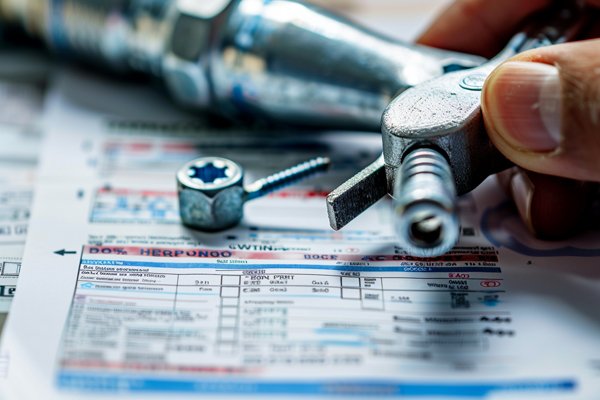
What factors affect replacement costs?
- Type of hose bib: Frost-free or anti-siphon models are more expensive to replace than standard versions.
- Location of the hose bib: Hose bibs inside walls or hard-to-reach areas increase labor time and costs.
- Plumbing modifications: Adjustments to pipes or fittings raise the total price.
- Local labor rates: Plumber fees vary depending on your region and job complexity.
When planning for replacement, consider both the cost of the new hose bib and the potential expenses of professional installation to avoid unexpected charges.
How long does a hose bib typically last?
A hose bib can typically last 10 to 20 years, depending on the quality of the materials, local climate, and how well it is maintained over time.
How can you extend the lifespan of a hose bib?
Regular cleaning, winterization, and prompt repairs extend its lifespan by preventing corrosion, leaks, and freeze damage. In colder regions, shutting off the water supply to outdoor faucets and draining the line before winter helps protect the bib from freezing and cracking. Additionally, inspecting the hose bib seasonally for worn washers, loose fittings, and signs of rust helps you catch small issues before they become major problems.

What affects hose bib lifespan?
- Material quality: Brass and stainless steel models tend to last longer than plastic or low-grade metal.
- Climate: Extreme temperatures and frequent freezing cycles reduce longevity.
- Usage: Heavy daily use or constant water pressure can wear out internal components faster.
- Maintenance: Regular upkeep, such as tightening connections and replacing seals, prevents premature failure.
By choosing a durable hose bib and following proper care practices, you can maximize its lifespan and ensure reliable outdoor water access year after year.
What are the signs of a failing hose bib?
Over time, hose bibs can wear out due to exposure to weather, frequent use, and aging parts. Identifying early signs of failure helps prevent water waste, property damage, and costly repairs.
How do you know if a hose bib is failing?
Common signs of failure include dripping water, rust, and difficulty turning the handle, which indicate that internal components like washers, seals, or valves may be worn or damaged. Persistent leaks can drive up water bills, while corrosion weakens the metal, making the fixture prone to cracks or breakage. Stiff or stuck handles often suggest mineral buildup or deteriorating mechanisms inside the faucet.

Key signs of hose bib failure:
- Leaking or dripping water: Even when shut off, water continues to escape from the spout or handle.
- Rust or corrosion: Visible damage to the metal surface, especially around joints and threads.
- Difficulty turning the handle: Stiffness or grinding, often caused by internal wear or mineral deposits.
- Low water pressure: Reduced flow may indicate blockages or internal deterioration.
- Water pooling near the foundation: Leaks can cause water to collect around your home, potentially leading to structural damage.
Why is early detection important?
Catching these signs early allows you to repair or replace the hose bib before more serious problems occur, such as pipe damage, increased water costs, or flooding near your home’s exterior.
What should you do if your hose bib is leaking or not working?
A leaking or malfunctioning hose bib not only wastes water but can also lead to higher utility bills and potential water damage to your home’s exterior and foundation if left untreated.
How can you fix a leaking hose bib?
Most leaks can be fixed by tightening connections or replacing worn washers, but it's important to inspect the entire fixture to catch any signs of serious wear, such as cracks or corrosion. Minor leaks are often easy DIY repairs, while severe damage might require a full replacement to restore proper function and prevent further issues.
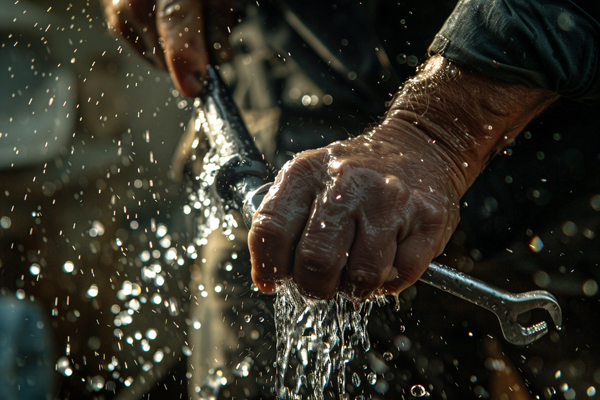
Quick Fixes
- Tighten fittings – Use a wrench to secure loose packing nuts or hose connections to stop small leaks.
- Replace the washer – Shut off the water supply, disassemble the bib, and swap out worn washers, which are a common cause of dripping.
- Check for cracks – Inspect the spout and connected pipes for splits, especially after freezing weather, as cracked pipes often require full replacement.
When to call a plumber
If leaks persist after basic repairs or if the hose bib is connected to interior plumbing with soldered joints, it’s best to contact a professional. They can safely replace damaged sections, ensure proper sealing, and prevent hidden water damage.
Promptly addressing leaks keeps your water system efficient, reduces the risk of costly repairs, and helps protect your home’s structural integrity.
What are the best ways to protect your hose bib from damage?
Protecting your hose bib is essential to avoid costly repairs, extend its lifespan, and prevent water damage caused by freezing or wear.
How can you protect your hose bib?
Insulating, covering, and proper winterization10 prevent freezing and cracking, which are the most common causes of hose bib failure. Exposure to cold weather, pressure buildup from trapped water, and general wear can lead to leaks or burst pipes if not properly managed. Taking preventative steps ensures your hose bib works efficiently year-round.

Protection Tips
- Use a hose bib cover in winter to insulate the faucet and block cold air from reaching the fixture.
- Drain water from the supply line by shutting off the interior valve (if available) and opening the exterior bib to release trapped water before freezing temperatures hit.
- Install a frost-free bib if you live in a cold climate, as these are designed with long stems that keep water inside the heated part of the home, reducing the risk of freezing.
- Disconnect hoses before winter, as attached hoses trap water inside the bib, increasing freeze risk.
- Check insulation around outdoor pipes and walls to minimize exposure to extreme temperatures.
By following these steps, you can prevent common hose bib damage, reduce maintenance costs, and protect your plumbing system throughout the year.
Conclusion
Hose bibs provide essential outdoor water access, but they require regular maintenance to function properly. Choosing the right size, installing at the correct height, and adding backflow protection ensure efficiency and safety. Recognizing signs of wear and addressing leaks promptly prevent costly repairs. Regular winterization and protective measures extend their lifespan. Whether replacing a hose bib yourself or hiring a professional, understanding the basics helps maintain your home's plumbing system effectively.
-
Learning maintenance tips can save you from costly repairs and ensure your hose bib functions properly. ↩
-
Understanding hose bibs can help you choose the right one for your needs and ensure proper installation. ↩
-
Understanding spigots can help you choose the right outdoor faucet for your needs. ↩
-
Explore the advantages of a ¾-inch hose bib for better water flow and efficiency in your gardening or outdoor tasks. ↩
-
Understanding the ideal height for a hose bib can help ensure proper installation and accessibility. Explore this link for detailed guidelines. ↩
-
Learn about hose bibs and their importance in your plumbing system. This resource will enhance your knowledge on the topic. ↩
-
Understanding soldered or interior bibs is crucial for proper replacement. This resource will guide you through the process. ↩
-
Understanding hose bibs can help you choose the right one for your needs and budget. ↩
-
Explore this link to understand the cost-effectiveness of DIY hose bib replacements and tips for successful installation. ↩
-
Discover essential steps for winterizing your outdoor plumbing to avoid damage and ensure functionality when spring arrives. ↩


